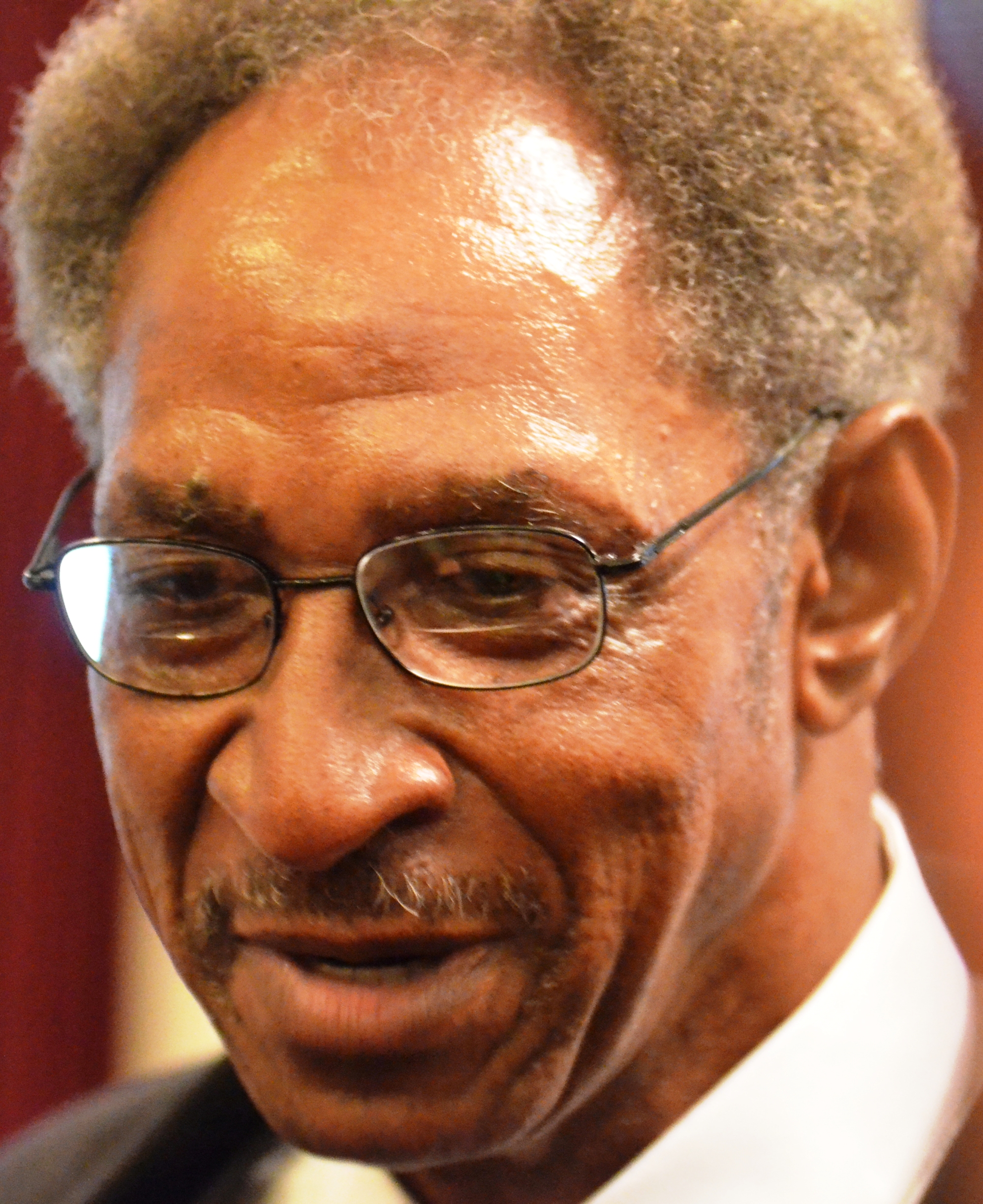 Copyrighted photograph courtesy Hickory Daily Record At about 9 p.m. on October 24, 1987, a 69-year-old white woman in Hickory, North Carolina, answered a knock on her door. A man brandishing a knife forced his way into her home, where he raped her twice and fled after taking some fruit from a bowl in the kitchen.
The victim described her attacker as a black man about 6 feet tall, 200 to 225 pounds, about 35 years old, dark-skinned and with bushy hair. She said he took off his shirt during the assaults.
Police showed the victim a photo lineup that included a photograph of Albert Lindsey Turner, who had been convicted of assault five times since 1971, including assault on a woman. The victim was unable to identify anyone.
Two days after the assault, the victim spoke about the attack with Linda McDowell, a neighbor, who said that she might know the identity of the rapist, but said she would only talk to police.
The victim then called police and reported what McDowell said. Also, for the first time she said that her attacker had a mole or bump on the side of his face and that she may have scratched him because she broke a fingernail. The victim also reported for the first time that her attacker “kind of talked with a lisp,” though he might have been drunk.
The victim did not know that McDowell was an informant for the police department. That same day, McDowell called police and reported that Willie Grimes fit the victim’s description—including a mole on his face.
Police then went to the victim’s home and showed her a photo lineup that included Grimes. The victim identified Grimes, though she said her attacker had longer hair.
On October 27, Grimes, whose only brushes with the law were two drunken driving convictions and a trespassing charge, learned that a warrant for his arrest had been issued and turned himself in to police. He asked to be given a polygraph examination, but was refused. He said he was innocent and had witnesses who could vouch for his whereabouts at the time of the crime. Grimes was then arrested and charged with two counts of rape and one count of kidnapping.
At a preliminary hearing three weeks after the attack, the victim said Grimes “looked like” her assailant.
In July 1988, Grimes went on trial before a jury in Catawba County District Court. The victim was shown the photo lineup she had previously viewed and said she could not remember if it was the same one she was shown after the crime. The judge then excluded the photo spread from evidence. She identified Grimes in court as her attacker, but only after she first mistakenly identified Grimes’s attorney as the rapist.
A crime lab analyst said that a hair found in the victim’s bed sheet was “microscopically consistent” with Grimes’s hair, but then exaggerated the significance of this finding by saying that “in seven years of doing hair examination, it is rare that I see two individuals in the general population whose hair is the same under the microscope and has the same characteristics.”
Two fingerprints taken from fruit left in the bowl in the kitchen were determined not to be Grimes’s.
Grimes presented eight alibi witnesses who said that Grimes had spent the evening with them. Grimes also testified in his own behalf that he was with the others. He also testified that he weighed between 158 and 165 pounds. He also had a prominent scar on his chest and two of the fingertips on his right hand were missing—details never mentioned by the victim.
Four character witnesses testified to his reputation as a calm man who did not become violent.
The jury convicted Grimes of two counts of rape and one count of kidnapping. He was sentenced to natural life in prison on the rape convictions and 9 years on the kidnapping conviction. His attorney requested that the physical evidence be preserved for future testing.
After the North Carolina General Assembly enacted a post-conviction DNA testing statute in 2001, Grimes sought DNA testing. He was told the physical evidence had been destroyed.
In 2003, the North Carolina Center on Actual Innocence, in Durham, began investigating Grimes’s case. The fingerprint card with the two fingerprints was submitted for an automated fingerprint search and was linked to Turner—the man who was initially suspected of the assault. Turner was interviewed and denied assaulting the victim, though he gave a variety of explanations for how his fingerprints were found in the victim’s home.
In October 2010, a petition was filed with the North Carolina Innocence Inquiry Commission seeking to overturn Grimes’s convictions. In May 2012, Grimes was paroled as a sex offender.
On October 5, 2012, following a hearing, a three-judge panel declared Grimes innocent and his convictions were vacated. Catabaw County District Attorney Jay Gaither told the judges, “The state cannot argue any conclusion other than for innocence in the case of Willie Grimes.” By that time, Turner, who was never charged in the case, had been convicted of a dozen more assaults, seven of which were assaults on women.
In October 2014, Grimes filed a federal civil rights lawsuit against the city of Hickory seeking damages for his wrongful conviction and incarceration. The lawsuit was settled in August 2016 for $3.25 million. Grimes also was awarded $750,000 in state compensation. In January 2019, Grimes received an additional $2.2 million as part of a settlement between the city of Hickory and an insurer that had refused to defend the city after Grimes filed suit.
– Maurice Possley |